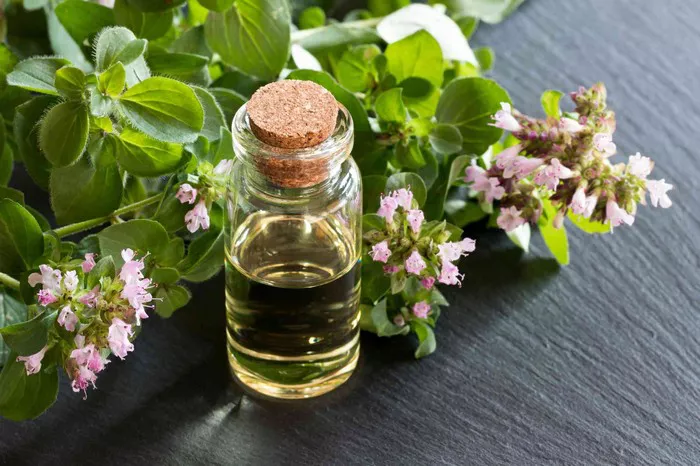In a world where smooth, hair-free skin is often desired, many seek alternatives to harsh hair removal methods like waxing, shaving, or lasers. Natural oils, celebrated for their gentle yet effective properties, have gained attention for their potential to slow hair growth. This article explores oils traditionally believed to reduce hair growth, their mechanisms, and safe usage.
While scientific evidence varies, these oils offer a holistic approach worth exploring. Always consult a healthcare provider before trying new remedies.
Understanding Hair Growth Cycles
Hair growth occurs in three phases:
- Anagen (Growth Phase): Hair actively grows from the follicle (2–7 years).
- Catagen (Transition Phase): Growth stops; follicle shrinks (2–3 weeks).
- Telogen (Resting Phase): Hair falls out; follicle rests (3–4 months).
Oils may disrupt this cycle by shortening the anagen phase, prolonging telogen, or blocking hormones like androgens that stimulate growth.
How Oils Influence Hair Growth
Certain oils contain compounds that:
- Block DHT: A hormone linked to hair follicle stimulation.
- Balance Androgens: Reduce excess hair growth (hirsutism).
- Anti-inflammatory Effects: Soothe follicles, slowing growth.
- Antimicrobial Properties: Prevent infections that accelerate regrowth.
Top Oils for Reducing Hair Growth
Spearmint Oil
- Overview: Known for its refreshing scent, spearmint oil is linked to anti-androgenic effects.
- Active Compounds: Menthol, limonene.
- Mechanism: Reduces testosterone levels, addressing hormonal hair growth (e.g., PCOS-related hirsutism).
- Evidence: A 2007 study found spearmint tea lowered testosterone in women. Topical use is anecdotal but promising.
- How to Use: Mix 2–3 drops with 1 tbsp carrier oil (coconut, jojoba). Apply daily to areas like the face.
- Precautions: Avoid sensitive skin; dilute properly.
Lavender Oil
- Overview: Popular in aromatherapy, lavender may delay hair growth.
- Active Compounds: Linalool, linalyl acetate.
- Mechanism: Estrogenic properties counteract androgens. A 2016 mouse study showed slowed hair growth.
- Evidence: Limited human studies; traditional use supports its role.
- How to Use: Blend 3 drops with 1 tbsp almond oil. Massage into skin post-shaving.
- Precautions: May cause hormonal changes; avoid prolonged use in children.
Tea Tree Oil
- Overview: A potent antimicrobial, tea tree oil may improve follicle health.
- Active Compounds: Terpinen-4-ol.
- Mechanism: Unclogs follicles, reducing inflammation and ingrown hairs.
- Evidence: No direct studies on hair reduction, but its role in skin health is well-documented.
- How to Use: Dilute 2 drops in 1 tbsp grapeseed oil. Apply 3x weekly.
- Precautions: Highly concentrated; always dilute to avoid irritation.
Soybean Oil
- Overview: Rich in phytoestrogens, soybean oil may balance hormones.
- Active Compounds: Isoflavones.
- Mechanism: Phytoestrogens compete with androgens, potentially slowing hair growth.
- Evidence: Mixed results; some studies show modest effects.
- How to Use: Use pure soybean oil as a nightly moisturizer.
- Precautions: Ensure non-GMO; patch test for allergies.
Neem Oil
- Overview: Bitter and antimicrobial, neem is used in Ayurveda for skin health.
- Active Compounds: Azadirachtin.
- Mechanism: Anti-inflammatory properties may weaken follicles over time.
- Evidence: Anecdotal reports suggest reduced growth with regular use.
- How to Use: Mix with coconut oil (1:2 ratio) and apply 3x weekly.
- Precautions: Strong odor; may irritate sensitive skin.
Turmeric Oil
- Overview: Turmeric’s anti-androgenic curcumin may inhibit growth.
- Active Compounds: Curcumin.
- Mechanism: Blocks DHT and reduces follicle inflammation.
- Evidence: Animal studies show promise; human trials needed.
- How to Use: Combine 1 tsp turmeric powder with 1 tbsp yogurt and 2 drops sesame oil. Rinse after 20 minutes.
- Precautions: Stains skin; use sparingly.
Eucalyptus Oil
- Overview: Invigorating scent with potential DHT-blocking effects.
- Active Compounds: Eucalyptol.
- Mechanism: Inhibits 5-alpha-reductase, an enzyme converting testosterone to DHT.
- Evidence: Limited studies; traditional use in hair care.
- How to Use: Dilute 3 drops in 1 tbsp olive oil. Apply to legs/arms.
- Precautions: Avoid if pregnant; may cause respiratory irritation.
Chamomile Oil
- Overview: Gentle and soothing, chamomile may lighten hair.
- Active Compounds: Bisabolol.
- Mechanism: Doesn’t reduce growth but lightens hair color, making it less visible.
- Evidence: Anecdotal; safe for sensitive skin.
- How to Use: Steep chamomile tea in water, mix with 1 tbsp honey, and apply as a rinse.
- Precautions: Sunlight may bleach hair further.
How to Use These Oils Effectively
- Consistency: Apply daily/3–4x weekly for 2–3 months.
- Carrier Oils: Always dilute essential oils (e.g., coconut, jojoba).
- Exfoliation: Remove dead skin to enhance oil absorption.
- Combination: Blend oils (e.g., lavender + tea tree) for enhanced effects.
Precautions and Safety Tips
- Patch Test: Check for allergies before full application.
- Dilution: Never apply undiluted essential oils.
- Hormonal Effects: Consult a doctor if using oils like lavender or tea tree long-term.
- Pregnancy: Avoid eucalyptus, spearmint, and neem oils.
- Realistic Expectations: Oils may slow growth but not eliminate hair.
Conclusion
While natural oils like spearmint, lavender, and neem show potential in reducing hair growth, results vary. They offer a gentle, chemical-free option but require patience and consistency. Pair these oils with exfoliation and a healthy diet for best results. For persistent concerns, consult a dermatologist to explore medical treatments.
Related topics:
How to Take Care of Dry Hair in Summer?
How Can I Stop Hair Fall in Winter Season?


